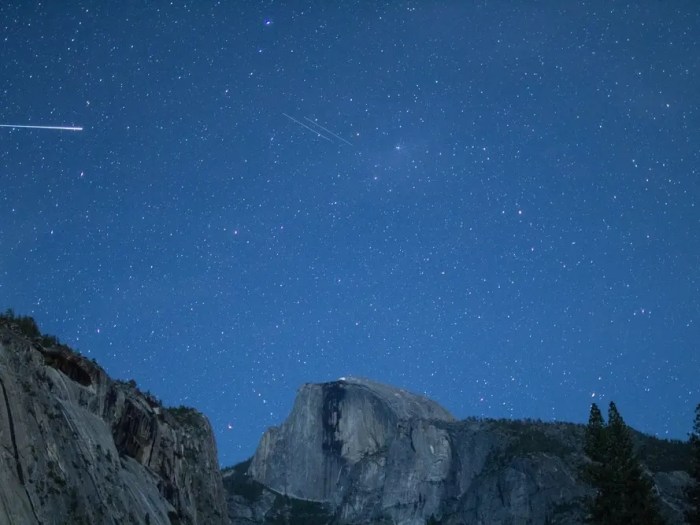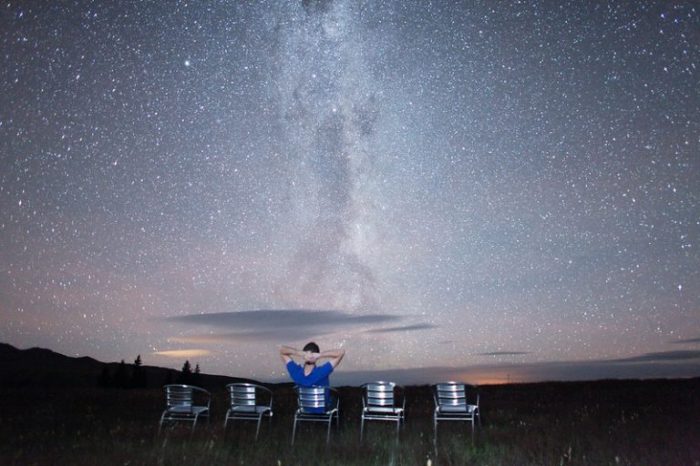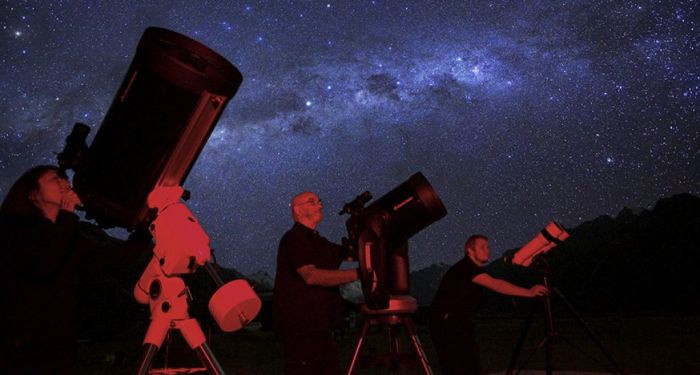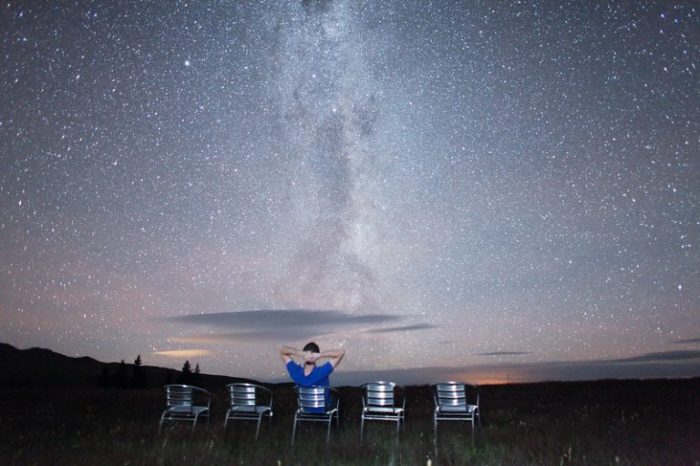Perseid Delta Aquariid meteor showers are a celestial treat, offering a breathtaking display of shooting stars across the night sky. These cosmic fireworks are formed by tiny particles of dust and debris left behind by comets as they orbit the sun. While both showers share the excitement of witnessing meteors, the Perseids and Delta Aquariids have unique characteristics that set them apart.
This comprehensive guide delves into the fascinating world of these meteor showers, exploring their history, scientific aspects, and cultural significance.
From the radiant points of each shower to their peak activity periods, we’ll examine the best locations and viewing tips. We’ll also compare the Perseids and Delta Aquariids, highlighting their similarities and differences. Plus, a historical timeline and comparisons to other major meteor showers are included. Learn about the essential gear, light pollution minimization, and practical advice for an unforgettable meteor shower experience.
Introduction to Meteor Showers
Meteor showers are spectacular celestial events where numerous meteors streak across the night sky. These fiery trails are created when small particles of dust and rock, remnants of comets or asteroids, enter Earth’s atmosphere at high speeds. The intense friction with the air causes these particles to vaporize, producing the brilliant flashes we see. Understanding these events requires an appreciation of their origins and the dynamics of their passage through our atmosphere.The celestial mechanics behind meteor showers involve the Earth’s orbit intersecting with the debris trails left by comets.
As Earth travels through these trails, the particles collide with our atmosphere, producing the observed meteor shower. This interaction is highly dependent on the precise timing of Earth’s orbit relative to the cometary debris field. The density and composition of the debris also influence the shower’s intensity and characteristics.
Perseids vs. Delta Aquariids
The Perseids and Delta Aquariids are two prominent meteor showers, but they differ in their parent bodies and associated celestial positions. The Perseids are associated with Comet Swift-Tuttle, while the Delta Aquariids originate from Comet 96P/Machholz. These differences in their parent bodies lead to variations in the shower’s radiant point (the point in the sky from which the meteors appear to originate), intensity, and activity periods.
Ever gazed at the Perseid Delta Aquariid meteor showers? They’re a celestial treat, but for a truly memorable experience, consider a trip to one of the stunning Greek islands. Checking out a list like a list a list greek island could help you pick the perfect location for your next stargazing adventure. The clear skies and minimal light pollution on these islands offer unparalleled views of the meteor showers.
So, grab your blanket, head to the right Greek isle, and prepare for an unforgettable night under the stars watching the Perseid Delta Aquariid meteor showers.
The Perseids are known for their bright, fast meteors, while the Delta Aquariids are often fainter but more numerous. This disparity in characteristics highlights the variety of meteor shower phenomena.
Historical Significance of Observing Meteor Showers
For centuries, meteor showers have captivated human imagination and sparked scientific curiosity. Early observations provided invaluable insights into the nature of celestial bodies and their interactions. Ancient civilizations often associated these events with mythology and folklore, while later astronomers meticulously documented their appearances, contributing to our understanding of the solar system’s structure and dynamics. The historical record of meteor shower sightings showcases a continuous human interest in these astronomical events.
Common Elements of Meteor Shower Viewing Experiences
Experiencing a meteor shower involves several key components that contribute to the overall spectacle. The most important element is a dark, clear night sky, free from light pollution. A comfortable viewing location, ideally with a wide open horizon, is crucial. A patient attitude and an appreciation for the gradual unfolding of the event are necessary for maximizing the enjoyment of the show.
Knowing the shower’s radiant point and activity peak enhances the viewing experience, allowing one to anticipate the appearance of meteors. Ultimately, the common elements of a meteor shower viewing experience underscore the shared appreciation of a natural astronomical wonder.
Ever caught a Perseid or Delta Aquariid meteor shower? They’re pretty cool, but if you’re looking for a truly unforgettable experience, why not combine that cosmic wonder with a trip to the Eje Cafetero region of Quindío, Colombia? Exploring the region’s incredible coffee farms and culinary scene through trip ideas culinary vacations agritourism eje cafetero quindio will create memories that will shine brighter than any meteor shower.
It’s a fantastic way to appreciate the beauty of the universe, both above and below! After your amazing journey, you’ll be ready to see the Perseids or Delta Aquariids even more vividly.
Perseids Meteor Shower
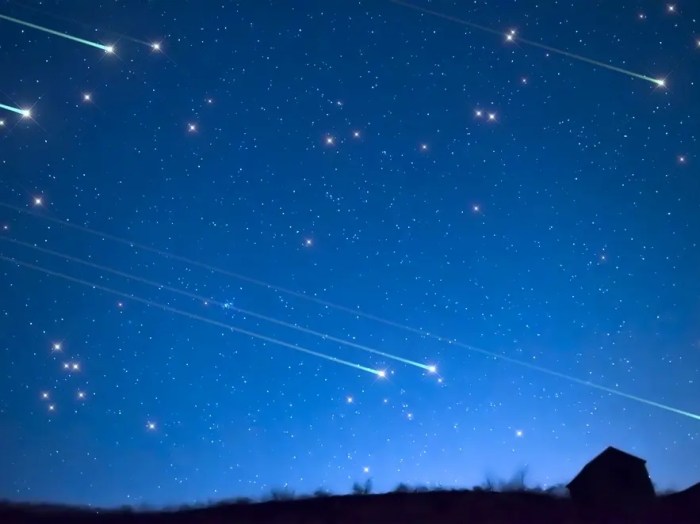
The Perseids meteor shower, a celestial spectacle, is one of the most anticipated and vibrant meteor showers each year. Known for its dazzling displays of shooting stars, it consistently draws crowds of stargazers eager to witness this astronomical event. The shower’s rich history and predictable peak activity make it a popular choice for both seasoned astronomers and casual skywatchers.
Radiant Point
The Perseids meteor shower originates from a radiant point in the constellation Perseus. This radiant point is the apparent origin point from which the meteors seem to emanate across the night sky. Observing the shower from a location with clear views of the constellation Perseus is beneficial for appreciating the shower’s trajectory. This point serves as a crucial reference for understanding the shower’s celestial path.
Peak Activity Period
The Perseids meteor shower typically reaches its peak activity during the latter half of July and the first few days of August. This period often coincides with a significant number of visible meteors per hour. The exact peak date varies slightly from year to year, influenced by subtle changes in the Earth’s orbit and the debris field left by Comet Swift-Tuttle.
For example, in 2023, the peak was predicted for August 12th, with the potential for increased meteor activity leading up to and following this date.
Visibility Conditions
Visibility conditions play a critical role in observing the Perseids meteor shower. Clear skies, free from cloud cover, are essential for optimal viewing. Light pollution from city lights can significantly diminish the shower’s visibility, making darker, more rural locations ideal. The absence of moonlight is also crucial, as a bright moon can wash out the fainter meteors.
Conditions like these are often observed during new moon phases.
Best Locations for Viewing
Dark locations away from city lights offer the best viewing opportunities for the Perseids. Parks, mountains, and rural areas are preferred over urban settings. The lack of light pollution in these areas enhances the viewing experience by revealing a greater number of meteors. Choosing a spot with an unobstructed view of the entire night sky maximizes the chance to see the shower’s full splendor.
For example, a national park or a designated dark sky preserve would provide ideal conditions.
Timeline of Significant Perseids Events
- 1993: A notable display of Perseids was reported, with observers noting an exceptional number of bright meteors. The particular visibility conditions and low light pollution contributed to the unforgettable experience.
- 2009: The Perseids shower provided an impressive display with favorable visibility conditions. This experience showcased the importance of understanding the peak period and location for optimal viewing.
- 2016: The Perseids meteor shower’s visibility was impacted by a relatively bright moon. This highlighted the influence of lunar illumination on meteor visibility, impacting the overall viewing experience.
Comparison to Other Major Meteor Showers
| Shower Name | Radiant Point | Peak Date | Average Zenith Hourly Rate |
|---|---|---|---|
| Perseids | Constellation Perseus | Late July/Early August | 50-100 |
| Leonids | Constellation Leo | November | 10-15 |
| Geminids | Constellation Gemini | December | 120-150 |
| Quadrantids | Constellation Boötes | January | 40-80 |
This table offers a comparative overview of major meteor showers, highlighting key features like radiant point, peak date, and typical meteor counts. These distinctions aid in understanding the unique characteristics of each celestial event.
Delta Aquariids Meteor Shower
The Delta Aquariids meteor shower, a celestial spectacle, graces the night sky each year. This shower, known for its persistent display of shooting stars, offers a captivating opportunity for stargazers to witness a cosmic ballet. Its relatively consistent activity makes it a favorite among those seeking a mesmerizing meteor shower experience.
Radiant Point
The Delta Aquariids meteor shower derives its name from its radiant point, located near the star Delta Aquarii in the constellation Aquarius. This radiant point is the apparent origin point of the meteors as they streak across the night sky. From this vantage point, the meteors appear to emanate outward, creating a visually striking display.
Peak Activity Period
The Delta Aquariids typically reach their peak activity between July 28 and August 23. However, the most intense activity is usually concentrated in the early hours of the morning on or near July 29th. This peak period provides the best chance for observers to witness a significant number of meteors.
Visibility Conditions
Optimal viewing conditions for the Delta Aquariids are crucial for a memorable experience. Clear skies, free from cloud cover, are essential. Light pollution significantly impacts visibility, so locations with minimal light interference are ideal. Moon phase also plays a role; a new moon or a very dark moon will result in the most favorable viewing conditions, as the moonlight won’t obscure the fainter meteors.
Best Locations for Viewing
Dark sky locations, far from city lights, are paramount for viewing the Delta Aquariids. National parks, rural areas, and observatories often provide ideal settings. These locations offer the best chance to witness the shower’s beauty, undisturbed by artificial light sources. Consider checking local astronomy clubs or online resources for recommended viewing spots.
Timeline of Significant Events, Perseid delta aquariid meteor showers
Unfortunately, a detailed timeline of specific historical Delta Aquariid events, like significant meteor storms or unusually high meteor rates, is not readily available in easily accessible historical records. Such precise historical data is difficult to definitively document.
Comparison Table
| Shower Name | Radiant Point | Peak Date | Average Zenith Hourly Rate |
|---|---|---|---|
| Delta Aquariids | Near Delta Aquarii in Aquarius | July 28-August 23 (Peak around July 29th) | ~20 meteors per hour (at peak) |
| Perseids | Near Perseus | August 12-13 | ~60 meteors per hour (at peak) |
| Leonids | Near Leo | November 17-18 | ~15 meteors per hour (at peak) |
Comparing the Showers
The Perseids and Delta Aquariids, two of the most popular meteor showers, offer captivating celestial displays. Understanding their similarities and differences helps skywatchers plan their viewing experiences. This comparison delves into the characteristics, intensity, and visibility of each shower, providing valuable insights for predicting optimal viewing opportunities.Comparing these showers isn’t just about counting streaks of light; it’s about understanding the celestial mechanics behind their appearance.
By analyzing their radiant points, peak dates, and zenith hourly rates (ZHR), we can predict when and where to find the best viewing experiences. This comparative analysis allows us to appreciate the unique qualities of each shower and how Earth’s position influences our perception of them.
Appearance and Intensity
The Perseids and Delta Aquariids, though both meteor showers, exhibit notable differences in their appearance. Perseid meteors are often described as bright and fast, with a tendency to leave persistent trails. Delta Aquariids, conversely, tend to be fainter and less frequent, although they can still produce impressive displays. The intensity of each shower is also influenced by the density of meteoroids in the stream and the Earth’s position relative to the stream.
The intensity varies from year to year, sometimes exceeding predictions.
Impact of Earth’s Orbit
The Earth’s orbit plays a crucial role in visibility for both showers. As the Earth travels through the debris trails left by comets, the position of the Earth relative to the meteoroid stream directly affects the number of meteors visible. The Perseids, for instance, occur when Earth intersects a dense stream of cometary debris. The timing of this intersection, along with the Earth’s speed through space, determines the intensity of the shower.
Similarly, the Delta Aquariids’ visibility is affected by the Earth’s orbital path and the distribution of the debris left by the comet.
Best Viewing Times
Determining the best time to view each shower requires understanding the radiant point, which is the point in the sky from which the meteors appear to originate. The radiant point for the Perseids lies in the constellation Perseus, while the Delta Aquariids’ radiant is in the constellation Aquarius. For optimal viewing, find a location away from city lights, allowing your eyes to adapt to the darkness.
Knowing the radiant point helps you track the meteors across the sky. A dark sky is essential for seeing fainter meteors.
Comparison Table
| Meteor Shower | Peak Dates | Radiant Point | Zenith Hourly Rate (ZHR) |
|---|---|---|---|
| Perseids | Typically around August 12-13 | Constellation Perseus | 50-100 (average) |
| Delta Aquariids | Typically around July 28-29 | Constellation Aquarius | 20-30 (average) |
The table above summarizes the key characteristics of each shower, including peak dates, radiant points, and average zenith hourly rates (ZHR). The ZHR is a theoretical measure of how many meteors per hour a viewer would see under ideal conditions. These values can vary depending on specific conditions.
Viewing Tips and Preparation: Perseid Delta Aquariid Meteor Showers
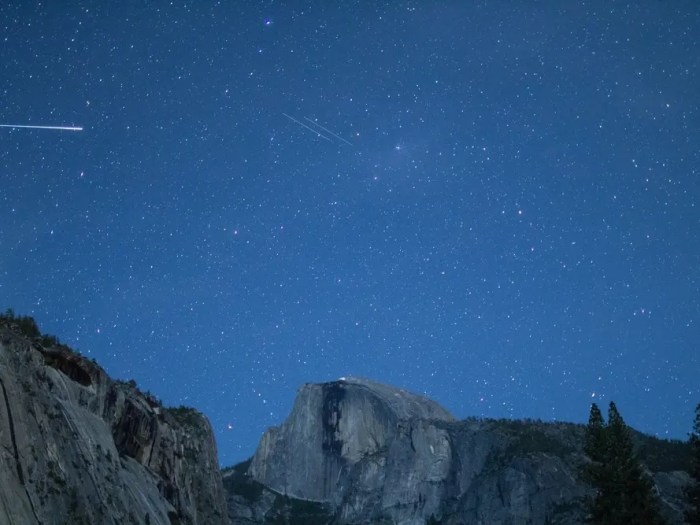
Getting ready to witness a meteor shower is more than just looking up at the sky. It’s about understanding the environment, preparing your senses, and maximizing your chances of catching a dazzling display. This involves minimizing light pollution, choosing the right location, and knowing what gear to bring. Careful preparation will transform a simple night into a memorable celestial experience.
Preparing Your Viewing Spot
Optimizing your viewing experience starts with selecting a location with minimal light pollution. Cities and towns, with their bright lights, significantly reduce the visibility of fainter meteors. Finding a spot away from urban areas, preferably in a rural or dark sky park, will dramatically enhance your viewing experience. Finding a location with an unobstructed view of the entire sky is also crucial.
Essential Gear for Meteor Shower Viewing
A comfortable viewing setup is essential for a prolonged and enjoyable experience. A reclining chair or blanket provides a more relaxed position for hours of stargazing. Warm clothing is also crucial, as temperatures can drop significantly at night. Bring a thermos of hot drinks, snacks, and a portable battery-powered light source for easy navigation without disturbing your night vision.
A red light flashlight is a game-changer, as it doesn’t diminish your dark adaptation as much as white lights do.
Minimizing Light Pollution
Light pollution significantly reduces the visibility of fainter meteors. The more light that interferes with your view, the fewer meteors you’ll see. Choosing a location far from city lights is the most effective way to mitigate this issue. Dark sky parks and rural areas are ideal for maximizing your viewing experience. For example, if you are in a city, finding a location away from buildings or streetlights will be more helpful.
Finding the Radiant Point
Knowing the radiant point is essential for understanding where most meteors will appear to originate from. The radiant point is the area in the sky where the paths of meteors appear to converge. For the Perseids, the radiant point is in the constellation Perseus. For the Delta Aquariids, the radiant point is in the constellation Aquarius. Using a stargazing app or a star chart can help you locate these constellations and the radiant points within them.
The radiant point is the starting point from which meteors will seem to emanate.
Practical Advice for Maximizing Your Experience
- Bring a comfortable blanket or chair for long-term viewing.
- Pack warm clothing, even in the summer, as nighttime temperatures can drop quickly.
- A portable battery-powered red light flashlight will preserve your night vision.
- Bring water, snacks, and hot drinks to stay comfortable and energized.
- Consider bringing binoculars or a telescope for a closer look at the meteors and constellations.
- Check the weather forecast and dress accordingly to avoid discomfort.
- Be patient. Meteor showers can vary in intensity. Allow ample time for observation.
Mythology and Culture
Across cultures, meteor showers have held a profound place in mythology and folklore. These celestial displays, with their streaks of light and unpredictable nature, have inspired awe and wonder, leading to diverse interpretations of their significance. From portents of good or bad fortune to symbols of divine intervention, meteor showers have been woven into the fabric of countless stories and beliefs.
These stories offer valuable insights into how different cultures perceived the cosmos and their place within it.These celestial events were often linked to powerful deities or supernatural forces. Their sudden appearance and swift disappearance lent themselves to associations with the transient nature of life and the mysteries of the universe. The interpretation of these events varied greatly, depending on the specific cultural context and the beliefs of the people observing them.
Cultural Interpretations of Meteor Showers
Different cultures viewed meteor showers through distinct lenses. Some saw them as divine messengers, while others considered them omens of change or even as manifestations of anger from the gods. This diverse range of interpretations reflects the multifaceted ways humans have interacted with and understood the natural world.
Those Perseid Delta Aquariid meteor showers are absolutely spectacular, aren’t they? It’s amazing to think about the celestial fireworks happening so far away, especially when long distance relationships were affected by the pandemic. Navigating the challenges of long distance relationships coronavirus while trying to plan a trip to witness the shower was tough, but now, as we look forward to the next meteor shower, it’s time to appreciate the beauty of the night sky again.
It reminds us of the vastness of the universe and how small we are, but also how amazing and interconnected we are, even across continents.
Examples of Cultural Beliefs
A fascinating exploration into the diverse beliefs surrounding meteor showers reveals a rich tapestry of cultural interpretations. These interpretations are a testament to the enduring human fascination with the cosmos and the profound influence of these celestial events on human thought and culture.
- Ancient Greeks: The Greeks often associated meteor showers with the gods, particularly Zeus. Some believed the streaks were sparks from Zeus’s thunderbolt. They also viewed them as signs from the heavens, indicating important events or changes in the future.
- Native American Cultures: Many Native American tribes had their own unique stories and beliefs surrounding meteor showers. Some tribes saw them as falling stars, spirits of the dead returning to the heavens, or as messengers from the spirit world.
- Indigenous Australian Cultures: Aboriginal Australians had complex and sophisticated cosmologies that integrated meteor showers into their understanding of the universe. They often saw the showers as manifestations of ancestral spirits or powerful forces at play in the cosmos.
A Comparative Table of Beliefs
The table below provides a concise overview of the diverse beliefs associated with meteor showers across different cultures. This summary highlights the remarkable diversity of human interpretations of these celestial phenomena.
| Culture | Belief System | Associated Myth | Symbolism |
|---|---|---|---|
| Ancient Greece | Greek Mythology | Sparks from Zeus’s thunderbolt | Divine intervention, signs from the heavens |
| Native American (Various Tribes) | Indigenous Beliefs | Falling stars, spirits of the dead | Connection to the spirit world, passage of souls |
| Indigenous Australian (Various Groups) | Aboriginal Cosmologies | Manifestations of ancestral spirits | Connection to the land, stories of creation |
| Many cultures (Worldwide) | Various Beliefs | Omens of change, good or bad luck | Hope, fear, anticipation, connection to the unknown |
Scientific Aspects
Unveiling the secrets behind meteor showers requires delving into their scientific underpinnings. Understanding the composition of these celestial streaks, the origins of the meteoroids they represent, and their connection to comets provides a profound insight into the processes shaping our solar system. This journey into the scientific realm of meteor showers will illuminate the historical and ongoing research into their origins and behavior.Meteor showers are spectacular displays of celestial fireworks, but their scientific underpinnings are equally captivating.
The study of meteor showers reveals crucial information about the materials that make up our solar system, the trajectories of celestial bodies, and the intricate dance of gravity.
Meteor Composition
Meteors, the fleeting streaks of light we witness, are primarily composed of dust and rock particles. These particles, ranging from tiny grains to relatively large fragments, are the remnants of comets or asteroids. When these particles enter the Earth’s atmosphere, they heat up due to friction with air molecules, causing them to vaporize and produce the brilliant trails we observe.
The chemical composition of the vaporized material can reveal insights into the origin and evolution of the parent bodies.
Origin of Meteoroids
The meteoroids responsible for both the Perseids and Delta Aquariids originate from distinct parent bodies. The Perseids, for instance, are associated with Comet Swift-Tuttle, a periodic comet that orbits the Sun every 133 years. The comet’s icy nucleus, as it approaches the Sun, sheds dust and debris into its orbital path. This material forms a stream of meteoroids, and as Earth crosses this stream, we experience the Perseid meteor shower.
Similarly, the Delta Aquariids are linked to Comet 96P/Machholz, which orbits the Sun approximately every five years. Its debris trail interacts with Earth’s orbit, producing the Delta Aquariid meteor shower.
Meteor Showers and Comets
A strong connection exists between meteor showers and comets. Comets, composed of ice, dust, and rock, are essentially “dirty snowballs.” As comets approach the Sun, the solar radiation heats the ice, causing it to vaporize and release dust and rocky particles into space. These particles form a stream or trail along the comet’s orbit. When Earth passes through these streams, the particles enter our atmosphere, creating the spectacle of a meteor shower.
The Perseids and Delta Aquariids, as mentioned, are prime examples of this connection.
Scientific Study of Meteor Showers
The scientific study of meteor showers is multi-faceted. Researchers utilize various techniques, including observations of meteor trails, spectroscopic analysis of the light emitted by meteors, and modeling of meteoroid orbits. These studies help us understand the composition, velocity, and trajectories of meteoroids, providing invaluable insights into the dynamics of our solar system. For instance, the trajectory of meteoroids can reveal clues about the structure and evolution of the solar system.
History of Research
The study of meteor showers has a rich history. Early observations documented the occurrence of these events, but it wasn’t until the 19th century that the connection between meteor showers and comets was firmly established. Further research, particularly in the 20th and 21st centuries, has advanced our understanding through improved observational techniques and computational modeling. This has enabled a deeper comprehension of the origins and behavior of meteor showers, allowing for more precise predictions and a richer understanding of our solar system.
Final Review
In conclusion, the Perseid and Delta Aquariid meteor showers offer a captivating glimpse into the cosmos. Understanding their celestial mechanics, historical significance, and cultural interpretations enriches the viewing experience. This exploration of their characteristics and viewing tips allows you to prepare for a spectacular display of shooting stars. Whether you’re a seasoned skywatcher or a novice, this guide empowers you to make the most of these cosmic events.
Prepare to be amazed!
